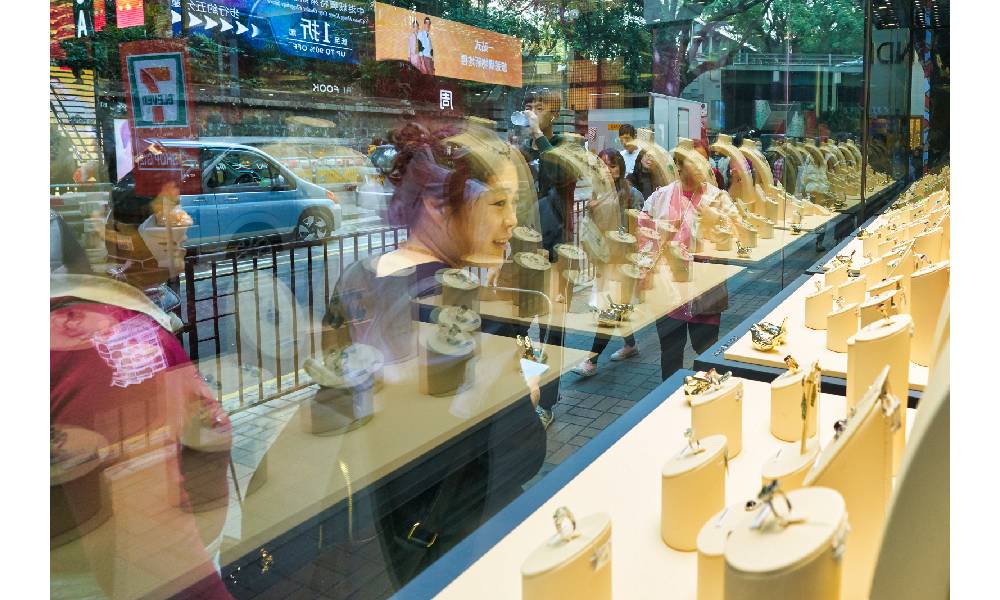Early signs of recovery in the Chinese diamond market during the twin Hong Kong shows are bringing cautious optimism to the Indian industry. Insights from key industry leaders suggest a gradual but promising resurgence, particularly in smaller-sized diamonds.
While a full-scale recovery may take time, the stabilisation of diamond prices and renewed interest from Chinese buyers provide hope for sustained growth. With markets slowly adapting to evolving consumer preferences, the diamond industry is poised to navigate this shift strategically, ensuring long-term resilience.
Kirit Bhansali, Chairman, GJEPC, welcomed the encouraging signals from China, underscoring the importance of market resilience. “The stabilisation of diamond prices and the revival of Chinese demand are positive indicators for the global diamond industry. India’s strong manufacturing base and adaptability position it well to leverage this opportunity and drive long-term growth.”
Shaunak Parikh, Vice Chairman, GJEPC, echoed these positive sentiments, highlighting renewed interest in smaller diamonds. “We are witnessing early but encouraging signs of recovery in Chinese diamond demand, particularly for smaller-sized diamonds. After a prolonged period of sluggishness, buyers are accepting current price levels in this segment, leading to steady sales,” he noted. He believes that China’s recovery could reshape India’s manufacturing sector, prompting a shift back towards natural diamonds and strengthening the industry’s long-term outlook.
Ajesh Mehta, Convener – Diamond Panel, GJEPC, noted that this was the first positive Hong Kong show seen in the last 4-5 years. While Chinese demand has not returned to its historical highs, he observed stabilisation in diamond prices and increasing movement in smaller stones. “Confidence is slowly returning to the market, and notably, we’re seeing some movement in smaller sizes—particularly diamonds below 10 points and in dossier sizes.
This shift is largely driven by a change in consumer preferences in China, Mehta explained, noting that, “The Chinese consumer has effectively pressed a reset button,” he said, explaining how retailers are now selling gold jewellery with smaller diamond accents rather than featuring diamonds as centrepieces. This shift is expected to be temporary, with consumers regaining confidence in larger stones such as 30 or 50 points over time.
“Meanwhile, we’re also seeing positive traction from other regions like Southeast Asia, South America, and emerging markets such as Cambodia, Vietnam, Brazil, and Venezuela, where buyers are showing interest in larger stones and are more accepting of current price levels. While these smaller markets can’t fully replace China’s dominance, they’re contributing to pockets of demand,” Mehta stated.
Devansh Shah, Partner, Venus Jewel, also expressed optimism, citing increased foot traffic at the Hong Kong trade shows from diverse global markets. “There were certainly positive enquiries, and we might be seeing the beginning of a recovery,” he said.
Devansh Shah highlighted that Chinese and Far East buyers remain highly quality-conscious, prioritising superior products over price. Round brilliant diamonds (D to H, VS to SI, 0.50 to 2 carats) saw multiple queries, while larger fancy cuts and round brilliants above 3 carats were available on an order-only basis.
For the Indian manufacturing side, there is positivity owing to the stabilisation in small diamond prices and the cautiously optimistic return of Chinese demand.
“However, the Indian industry will need to remain adaptable, keeping a close watch on both market fluctuations and global competition to fully capitalise on this potential resurgence. India could likely see both short-term gains and long-term stability if the Chinese market continues to recover steadily,” Devansh Shah noted.
Vipul Shah, CEO & Managing Director, Asian Star, offered a more measured perspective. While he acknowledged some improvement in Chinese participation compared to past editions, he cautioned that clear signs of a substantial recovery were not yet evident. “Chinese buyers were present, but their activity remained selective and measured. Industry sentiment at the Hong Kong show was cautiously optimistic, with some exhibitors noting that the mood was better than expected. However, significant purchasing or broad-based interest from the Chinese market was still lacking,” he said.
Vipul Shah noted that Chinese buyers primarily focused on specific commercial categories like -2 sieve size, +9–11 sizes, and GIA-certified dossiers, aligning with demand for smaller-sized goods in D–H colour and VS–SI clarity. However, he noted that this buying was opportunistic and price-sensitive, with many buyers resisting current price levels. “Unlike past years, where Chinese buyers sought a wide range of stones, including larger solitaires and high-end pieces, this time the demand was narrow,” he observed.
When asked whether this renewed interest signals a sustained recovery, Vipul Shah remained sceptical. “We view the current demand as a temporary uptick rather than a sustained recovery. While there are early indicators of stabilisation, such as improved sentiment at trade events and a halt in price declines, it’s too early to consider this a trend. The market is still coping with structural challenges in China, including cautious consumer spending and a shift in preferences towards gold jewellery and alternative investments,” he explained.
For India’s diamond manufacturing and trade outlook, Shah suggested that while this interest might trigger a limited uptick in specific segments like melee and mid-sized dossiers, a meaningful impact remains uncertain unless Chinese consumer demand strengthens more steadily. “China remains a critical market for India’s diamond industry. Even if this resurgence is driven by selective restocking rather than strong retail momentum, it offers a sense of direction and a potential shift in sentiment,” he concluded.

